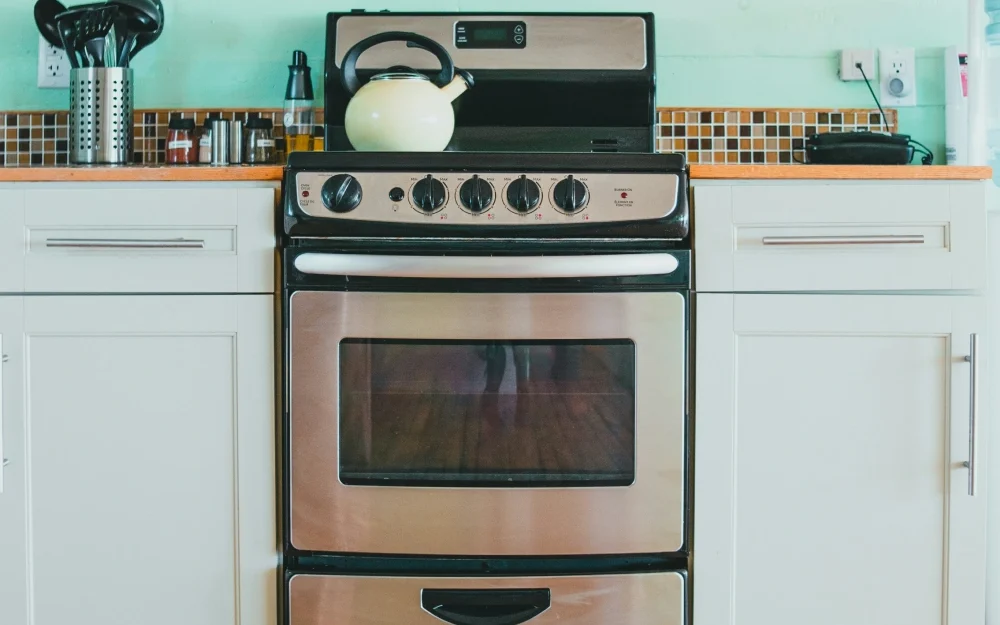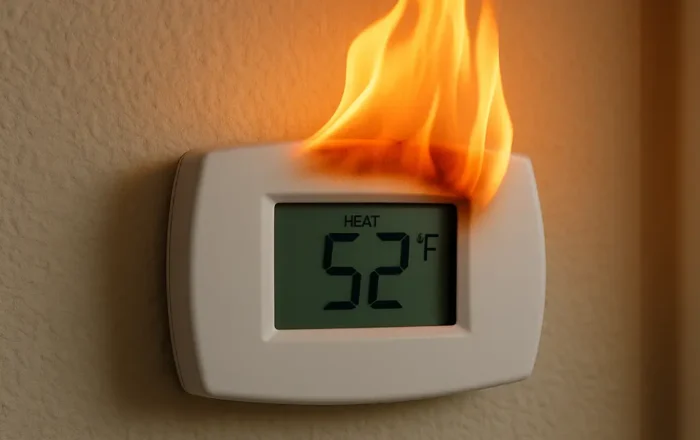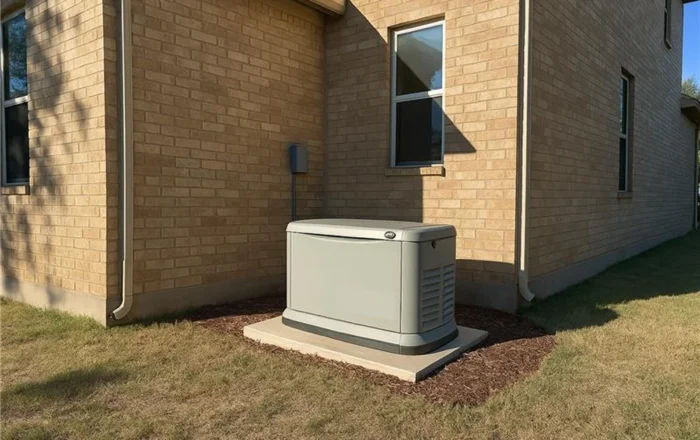Is My Thermostat Broken?
5 minute readHow to diagnose a faulty thermostat, fix common issues, and know when it’s time for a replacement.
Home > Blog > How Much Electricity Does an Oven Use?
5 minute read • Last update January 2025

Whether you’re whipping up a quick weeknight dinner, preparing a weekend feast, or tackling a recipe for a special occasion, your oven may play a key role in bringing meals to life. With regular use, you might wonder how much energy your oven uses—and how it impacts your electric bill.
So, exactly how much electricity does an oven use? While there’s no one-size-fits-all answer, we can give you a solid idea. In this handy guide, we’ll explore electric oven wattage, power consumption, and energy efficiency, along with practical tips to help you reduce energy usage and save money on your electricity plan.
Oven wattage and energy consumption vary significantly depending on the type and size of your cooker. As a general rule, the higher the wattage of the oven, the more electricity you will use:
However, the exact wattage drawn will also depend on what you’re using your electric range for. For example, baking or broiling at high temperatures or making dishes with a long cooking time use more energy than simply reheating leftovers. Here are a few electricity consumption FAQs to better understand how much power your oven may use.
Now that we have a baseline for electric oven power consumption, let’s consider the impact on your electricity costs. Let’s say you use a standard oven or range with a maximum power consumption of 4000 watts and an average wattage of 3000. If you run your oven for one hour at the average electricity rate of 15 cents per kilowatt-hour, the cost would be $0.45 (3 kW × $0.15).
While $0.45 per hour may not seem like much, monthly and yearly costs can quickly add up—especially when you consider the practicalities of cooking more food, especially during the holiday season.
So, how much energy does an oven use over an entire year? To calculate the annual energy consumption of your oven, you’ll need a rough idea of total usage as well as the wattage. The average home cook uses a toaster or microwave oven for smaller kitchen tasks, meaning full oven use is typically around 150-300 hours annually.
The table below focuses on average oven wattage usage and annual kWh. For stovetops, energy use varies by burner size and cooking time, as we’ll explain further in the next section.
| Electric Oven Watts | Hours Per Year | Annual kWh |
| 1500 | 150 | 225 |
| 200 | 300 | |
| 250 | 375 | |
| 300 | 450 | |
| 2,000 | 150 | 300 |
| 200 | 400 | |
| 250 | 500 | |
| 300 | 600 | |
| 2500 | 150 | 375 |
| 200 | 500 | |
| 250 | 625 | |
| 300 | 750 | |
| 3,000 | 150 | 450 |
| 200 | 600 | |
| 250 | 750 | |
| 300 | 900 | |
| 3500 | 150 | 525 |
| 200 | 700 | |
| 250 | 875 | |
| 300 | 1050 | |
| 4,000 | 150 | 600 |
| 200 | 800 | |
| 250 | 1000 | |
| 300 | 1200 | |
| 4500 | 150 | 675 |
| 200 | 900 | |
| 250 | 1125 | |
| 300 | 1350 | |
| 5,000 | 150 | 750 |
| 200 | 1000 | |
| 250 | 1250 | |
| 300 | 1500 |
To calculate total yearly costs, simply multiply the applicable number of kWh by your electricity rate, which should be clearly stated on your electric bill.
While ovens consume significant power for baking and roasting, electric stoves (cooktops) use less energy for tasks like boiling, frying, and simmering. Here’s a quick overview of electric stove wattage:
The actual energy consumption depends on the burner size and cooking time. For example, boiling water for 10 minutes on a large burner will use approximately 0.5 kWh (2,500 watts × 0.2 hours).
By choosing the stovetop for tasks like boiling or frying, you can reduce energy use compared to firing up the oven for small jobs. While stovetops generally consume less energy per session, frequent use throughout the day can still add up on your electric bill.
If you want to save energy and reduce your utility bill by using less electricity, it’s essential to choose an energy-efficient oven. Here are some factors to consider when shopping.
Older ovens are generally less energy efficient than newer models and are more susceptible to malfunctions that could cause them to consume even more energy. So, timely replacement is key to making maximum long-term savings.
Even if your oven is efficient on electricity, you can make a few minor adjustments to reduce your energy consumption even further. Here are some easy ways to ensure your household is saving the most energy:
By making these simple adjustments, it becomes much easier to save energy and keep your household’s electricity costs in check.
While learning how to save energy is always advantageous, choosing a trustworthy and reliable utility provider is essential for homeowners looking to maximize savings.
At BKV Energy, we pride ourselves on helping Texans save money by making monthly energy bills more manageable. We specialize in delivering straightforward energy plans with simple fixed rates—no gimmicks, no minimum usage requirements, and no monthly base charges guaranteed!
Try our Bluebonnet plan for 30 days risk-free to see how much you could save!
Graham Lumley, Digital Marketing Manager at BKV Energy, leads digital and traditional marketing strategies, focusing on educating Texans about the state's deregulated energy market. With over 8 years of marketing experience, he creates content to help consumers understand and save on their energy bills, bringing a fresh and dynamic approach to the industry.

How to diagnose a faulty thermostat, fix common issues, and know when it’s time for a replacement.

How to choose the right generator for your Texas home
Get $50 off your electric bill!
Use code BKVEJOINUS50
Enter your zip code to shop BKV Energy's affordable, fixed-rate Texas electricity plans. Use the promo code for $50 off your electric bill.